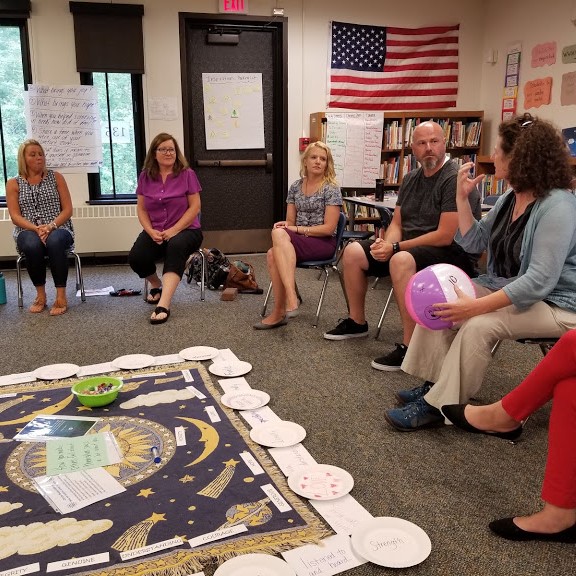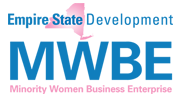Making Classroom-Based Restorative Circles Work

by Meredith Needham
Classroom-based restorative circles are a great way to build a supportive school culture to help everyone feel welcome and valued. Restorative practices are becoming a popular alternative to traditional school disciplinary systems. When we think of disciplinary action, we often think of what happens after an incident occurs. Yet when implemented correctly, restorative practices can be effective preventative strategies to decrease the need for intervention later down the road.
Restorative practices are a process rather than a program. Successful implementation often requires a strong understanding of restorative processes and philosophies by the school’s administrative team. With guidance and encouragement from administrators, teaching and support staff are trained and begin facilitating restorative circles in classrooms.
Benefits of classroom-based restorative circles
Classroom-based restorative circles can serve as effective preventative strategies for many reasons. Circles:
- Encourage equity
- Support the development of SEL skills
- Build relationships and community
- Provide a safe forum for students to express feelings and needs
Building a restorative culture through classroom circles can decrease the need for disciplinary action by building positive relationships and empowering your classroom community to address conflicts as they arise.
Questions about restorative practices
I have spent the past four years in an urban middle school guiding and supporting the school’s use of restorative practices. Throughout this experience, teachers and administrators have posed several common questions about implementing preventative restorative practices. Here are some of those questions, and the answers our work together has taught us:
What does equity look like in circle?
Our educational systems are typically set up as hierarchies. We are trained and accustomed to being the leaders and authority figures in our classrooms and schools. Circle asks us to take a non-hierarchal approach in building relationships and community with our colleagues and students. We must let go of the urge to completely control the process while in circle.
Giving up some of our power in the classroom takes practice. As teachers in circle, it is our responsibility to comply with the same circle expectations we ask of our students. Put away that cell phone. Resist the desire to respond to every comment. Tell your stories. Listen and be present for the entire conversation.
In circle, we create equity by providing opportunity for each individual to use their voice, and to work toward consensus. Each voice – including the facilitator’s – bears the same weight in circle.
What does fidelity look like in circle?
Provide consistency and repetition to help students develop their social emotional skills in circles. Follow a predictable framework for your circles. The circle structure we follow in every circle is:
- Set Expectations
- Use an Opening Ceremony
- Do a Check-in Round
- Conduct a Dialogue/Circle Activity
- Use a Closing Ceremony
There is comfort in predictability. The consistency of this framework allows students to feel safe in circle. Keeping to this structure with fidelity builds a trusting and respectful classroom culture where our students’ skills can develop.
Structure does not mean rigid. A consistent framework also gives you the freedom to adapt and be flexible when needed. In your circles, give the space and time to address conflicts or concerns as they arise. If your dialogue needs to stray from your original plan due to the needs of the circle, that is ok! If your check-in becomes the dialogue, that is also ok. Maintain the structure by ending with the closing ceremony. Consistency, while giving strength to each individual voice, is a key aspect to fidelity in circle.
What am I teaching in circle?
As educators, we think about learning objectives for every activity. In circle, we create a space to develop and strengthen relationships, while exploring diverse thoughts and perspectives. Circles teach social-emotional and C.A.R.E.S. skills. We reinforce these skills by modeling and practicing within the circle framework. The framework provides the consistency and repetition necessary for our students to feel a safety and confidence in developing their skills together. When you add content-based discussions to circle activity, you empower students to deepen their understanding of academic concepts while strengthening their social and emotional skillsets.
Why is everyone passing during dialogue?
It is ok to pass in circle. But if it feels like everyone is passing, that could be a signal you need to rethink your circle plan. In my experience, teachers sometimes want to jump right in with high-risk questions. Our desire to run circles to problem-solve, address conflicts, or forge emotional connections can distract us from the need to build a strong foundation first.
Use low-risk dialogue prompts to invite circle participants into the process. This gives them a chance to build their relationships and sense of community, and to develop their communication skills. Then, when conflict or other needs arise, students already know and trust the restorative circle framework and are more willing to share.
What we perceive as low risk may be high risk for our scholars. Paying attention to the dynamics of circle, particularly silence, is often a clue that our dialogue may be higher risk for our students than we thought.
What’s the point?
Classroom-based restorative circles provide the time and space to develop a sense of equity and safety, and forge a positive classroom culture through trusting relationships. Restorative circles in the classroom strengthen students’ problem-solving skills. When conflicts do arise, you will be prepared to have honest dialogue with your students. Students learn to hold each other accountable, acknowledge each other’s feelings, and accept each individual’s needs. Our students grow their C.A.R.E.S. and social emotional skills in circle in ways that impact their learning and engagement in positive ways. With classroom-based restorative circles, everyone has the opportunity to explore their power to be peaceful.
Learn more
For more resources to support your Restorative Practice framework, check out this great Restorative Toolkit compiled by our friends at Finger Lakes Community Schools.
About the Author
Starting with Peaceful Schools in 2015, Meredith Needham has served as a Restorative Practices Coordinator in an urban middle school and an Enrichment Instructor in a K-8 school, and is a member of our professional development team. When not in school, you’ll find Meredith building her personal CARES skills while exploring her new love of mountain biking and old love of painting and drawing.




